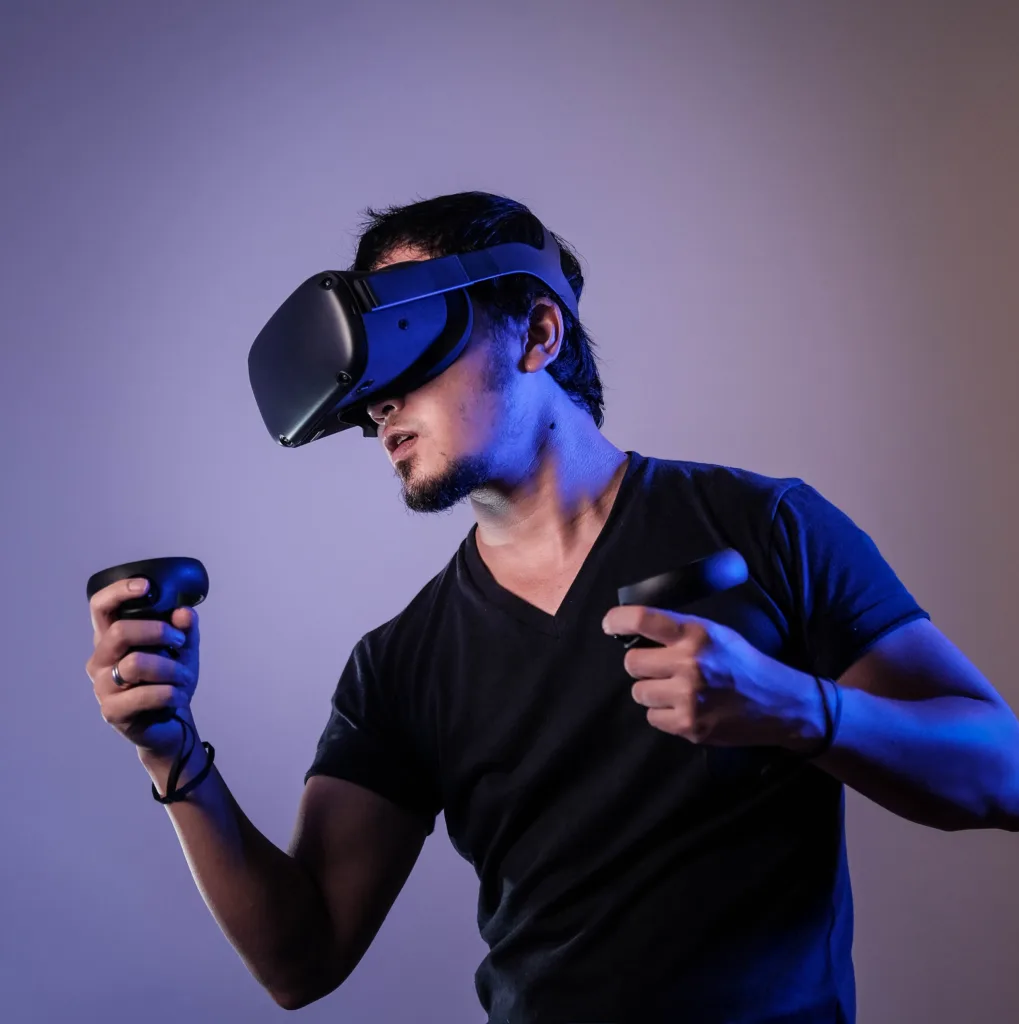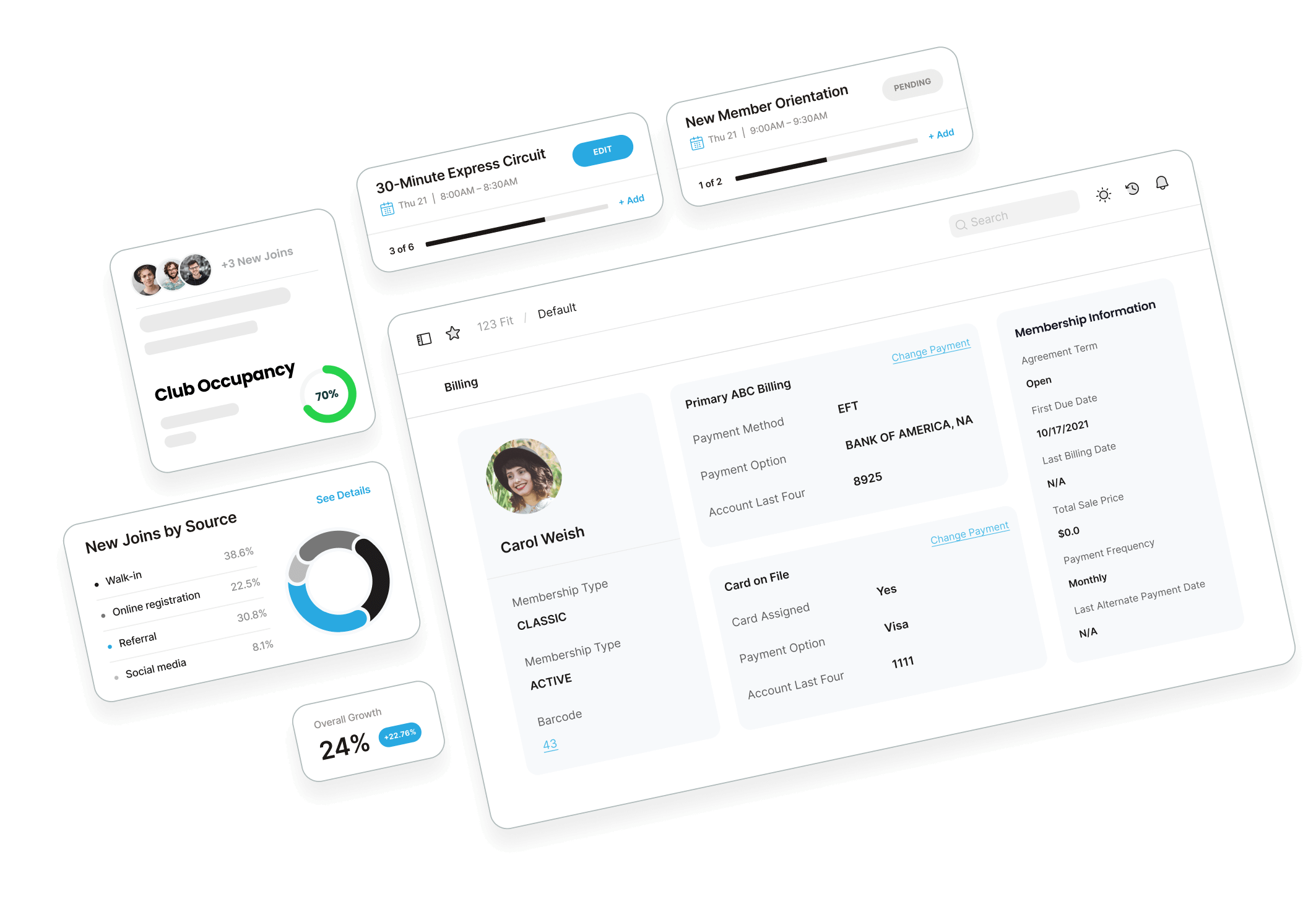The Impact of Virtual Reality on the Fitness Industry
At ABC Fitness, we understand the evolving landscape of the fitness industry and the impact technology has on it. Because of this, we celebrate all things #fittech. This inspired us to create the Technology Series to dive deep into the recent technological events that most changed the fitness industry. One such revolutionary step was the innovation of virtual reality (VR).
Virtual Reality in fitness is the new reality in fitness. According to the Washington Post, almost a quarter of online adults in the United States say they’re interested in buying a VR headset, and 18 percent say they’d use a headset primarily for exercise.
You might not yet see VR sets in your club/studio, but your members are likely dabbling with them. In 2022 alone, 19.1 million VR headsets were sold.
Is this merger of technology and fitness a fad? Or is it the start of a new normal? Is it time to pick up a headset and dive in?
In this blog, I’ll examine the impact of virtual reality on fitness and exercise to find that VR is truly beyond gaming; it’s a revolution and part of the new fabric of our workout regimens. I’ll start by relating my own personal experience with VR and then look at a broader picture by examining the top four impacts VR has had on fitness.

Step in the Ring: A Personal Experience
I used to have a fixed perspective on fitness, one based on traditional methods. Gym and outdoor workouts were my go-to routines, and I, like most individuals, measured my fitness by my real-world accomplishments.
But? I hated cardio. This was one area I struggled with. I was packing on some extra pounds and needed to burn some calories.
Something changed when I stepped into the world of virtual reality boxing. Geeky, I know, but hear me out.
Immediately after downloading Thrill of the Fight! on my Meta Quest 2, I was hooked.
Becoming a virtual boxer in the metaverse (something my wife doesn’t want me to share with strangers for some reason), I started training with virtual opponents, and to my surprise, I found myself dripping with sweat. After three rounds, I was down for the count.
Pretty quickly, I found myself digging deep to hang in the ring with more challenging opponents. I experienced the excitement of victory and the sting of defeat when it was time for the referee to announce a winner and raise a glove.
And I came back for more. Day after day.
I watched my scores improve. I saw improvements in the mirror.
Before I knew it, I had found my solution to cardio training in the world of VR. Now, it’s just something as part of a broader fitness perspective where I no longer rule anything out.
But enough about me, let’s look at the impact of VR on fitness and exercise. Here are the top four ways that VR is really changing the game.
- A Barrier-Free Approach: Inclusivity and Accessibility
The most remarkable change brought by VR to fitness is its ability to break down barriers—and excuses!
Thanks to VR, anyone can now exercise from the comfort of their own home, eliminating location constraints, time limitations, and physical obstacles.
Personally, I now have an impressive home gym, complete with a virtual boxing ring, that all fits into a 6x6ft space.
And are these virtual boxing workouts just as effective as real-world workouts? Science says, yes! According to research, VR-based exercise is just as effective as real-world exercise.
- Fitness Meets Gaming: Motivation and Engagement
If you think of the Nintendo Wii at the mention of virtual reality gaming, you’re not entirely wrong. But, you should know that VR has come a long way since 2006.
VR fitness games take users to breathtaking virtual worlds where they can climb mountains, explore fantastical realms, and engage in epic battles, all while breaking a sweat and torching calories. The result? Motivated individuals eagerly looking forward to each workout session.
And as we’ve seen in our research at ABC Fitness, motivated members are better retained members.
Personally, I’ve found new realms of motivation as I eagerly await my next boxing opponent. (And if you’re wondering, I set the difficulty setting of my virtual challenger to a respectable “Moderate.”)
The gamification of fitness brought on by VR is a game changer.
- Tailored Training and Progress Tracking
Personalization is at the core of the VR fitness experience. Advanced algorithms in VR platforms analyze user data to create customized workouts based on individual goals, fitness levels, and preferences. This tailored approach not only keeps users motivated but also presents challenges perfectly matched to their abilities. The VR fitness systems meticulously track progress and offer valuable feedback, empowering users to stay on track and celebrate every accomplishment.
- Elevated Cardiovascular Training and Endurance
Say farewell to dull cardio workouts! VR injects excitement into cardiovascular training by infusing it with a sense of adventure. Whether running, cycling, or rowing, users can now explore captivating virtual landscapes, compete against avatars, or engage in group challenges. This infusion of excitement and near-infinite possibilities leads to improved endurance and overall fitness levels.
What’s most interesting is what science has to say about this. According to the National Library of Medicine, the immersive world of gaming and fitness actually lowers one’s perceived exertion. In short, working out doesn’t feel as intense as it normally does.
Let’s Wrap it Up
Virtual Reality is on the verge of truly revolutionizing the fitness industry and ushering in a new era of possibilities. From improving accessibility and inclusivity to transforming workouts into immersive, gamified experiences, VR is redefining how we approach fitness.
Its potential to remove barriers, engage users, and promote a sense of community points toward a future where VR will inspire even more individuals to embrace an active and healthy lifestyle. As technology continues to advance, I can’t wait to see even more exciting innovations in VR fitness, propelling us towards our fitness goals like never before.

